

“On the Gas”: The drag racing life and times of Danny Ongais
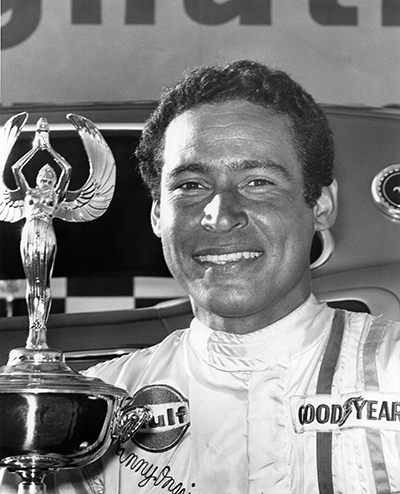
Long before Danny “On the Gas” Ongais became a household name across the country and around the world on television and radio as a revered IndyCar driver, he belonged to us, to the world of drag racing, where he sated his need for speed in the formative years of his motorsports career.
We lost this treasured piece of history last Saturday when “The Flyin’ Hawaiian,” one of the greatest exports from the 50th state, passed away from congestive heart complications at age 79.
Longtime followers of this column are well aware of Ongais’ greatest quarter-mile accomplishments behind the wheel of Mickey Thompson’s Mustang Funny Car in 1969, but his love of going fast was deeply rooted long before then.
Born in 1942 in the wake of the devastating attack on Pearl Harbor, Ongais grew up in Kahului on the island of Maui, and he raced BSA motorcycles as a teenager before he was introduced to the dragstrip by some friends. As good as he was on two wheels — and all indications are that he was very good — he was equally as good or better on four wheels and quickly won the Island Championships and Outstanding Driver of the Year awards.
His racing career was paused as he served a three-year stint in the U.S. Army, where he became an elite Airborne paratrooper. While deployed in Europe in the early 1960s, he also got his first taste of sports-car racing that would become one of his many fortes later in his career.
When he returned to his home state, he realized that his motorsports future was limited by the dearth of racetracks there, and he crossed the Pacific to the Mainland with fellow Hawaiian Roland Leong, where they both found employment with the Dragmaster team, then one of the most successful and prolific builders of dragster chassis. Jim Nelson once said that what he could tell about Ongais was that "all he wanted to do was race. We let him drive my car, and his first run was as good as any I ever made. He had that natural ability to drive anything he climbed into."

Pomona 1962: That's Ongais, second from left, standing next to Leong
In 1962, Ongais was part of Leong’s dragster crew at the Winternationals, where they won the Long Distance and Best Appearing awards. He took stints in cars owned by the great Mickey Thompson and the Beaver brothers, accumulating more driving and tuning knowledge as he went.
By 1963, Ongais had his own gas dragster, a supercharged 371 Chevy-powered budget machine cobbled together from castoff parts from other teams and manufacturers and won the AHRA Winter Championships in both 1963 and 1964. To him, the hardest part of the project came in deciding on a name for the car. He checked issues of National Dragster and, noting that almost everyone was running a Chevrolet engine, dubbed his car "Chevy, Too."
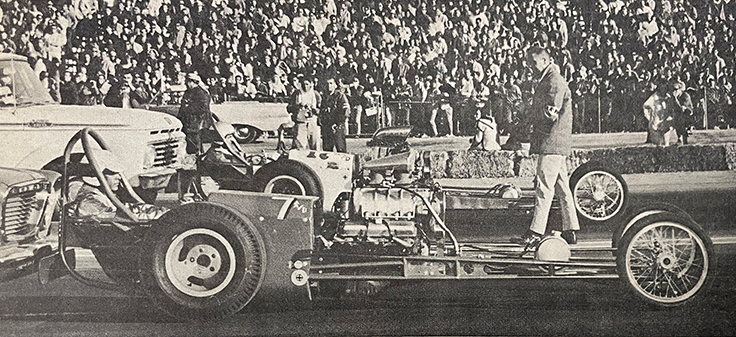
At the 1964 Winternationals, his dragster defeated a field that included heavyweights like Thompson, the Peters & Frank Freight Train, and Earl Poage. After losing Saturday’s AA/Dragster class final to Thompson, he beat Thompson in the final of the eliminator on Sunday, 8.39 to 8.53, to claim the big prize, then a few months later, he won the Hot Rod Magazine Championships at Riverside Raceway.

Ongais’ win at Riverside was especially memorable as his dragster broke after final-round opponent Gordon Collett red-lighted, so, as was the rule back then, Ongais had to push his car the length of the quarter-mile to trip the win light. The arduous task took nearly two minutes but was met with rousing cheers from the crowd.
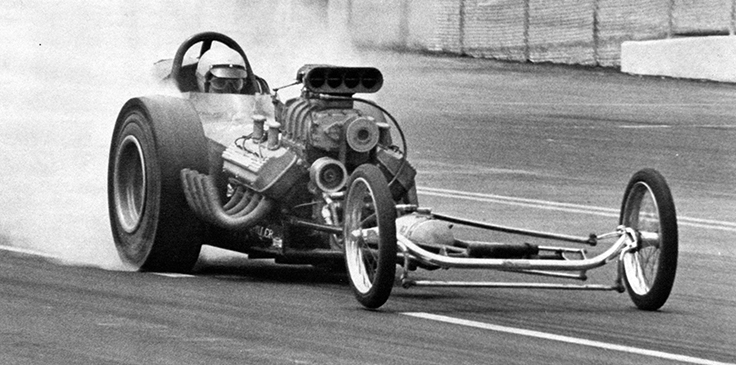
In late 1964, Ongais moved into the nitro ranks for good, driving the Broussard-Davis-Ongais "Mangler" dragster in which he won the 1965 Grand Opening meet in his adopted hometown of Carlsbad, Calif., and later moved on to wheel the Honda of Wilmington entry in 1966 and was a dominant force in SoCal Top Fuel action, but due to his unassuming nature — in addition to his well-known “On the Gas” nickname, he also was known as “the Silent Hawaiian” (and sometimes “the Quiet Hawaiian”) — he sometimes flew under the publicity radar.
“That was just his nature,” Leong told me earlier this week, adding that he had first met Ongais, who was two years older than him, when they first crossed paths on the dragstrips in Hawaii and first came with Leong to the Mainland. “He was always kind of a private person. We stayed friends over the years, and we’d see each other at functions — if he showed up. He might show up and talk to you for a while and then you’d look around and he’d be gone. That’s just his makeup, the way he was.
“I do think he was one of the best drivers out there. He was hard to beat. He could cut a light and get down any track.”
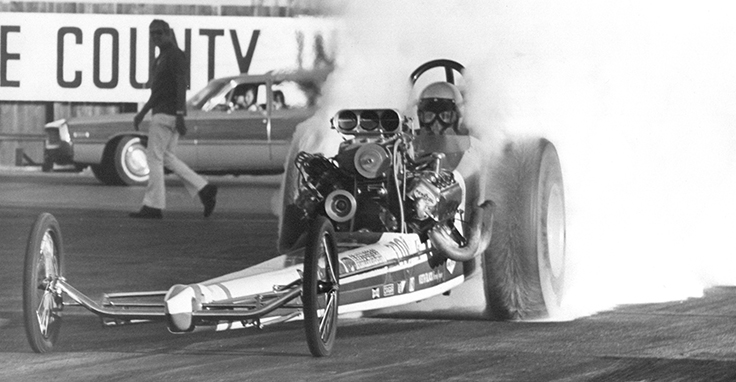
Don Prudhomme, who met Ongais through his old pal Leong, called me early last week to weigh in on Ongais, a guy with which he carried on a relationship even after Ongais left drag racing, thanks to Prudhomme’s interest in and friends within IndyCar racing.
“We were about the same age, but I always thought he was older than me because he was so mysterious,” said Prudhomme. “No one even knew much about him, let alone his age. The guys in IndyCar racing called him ‘The Ghost from the Coast.’ “
(Be sure to read the end of this column for more from Prudhomme, who says some very kind and impressive things about Ongais.)
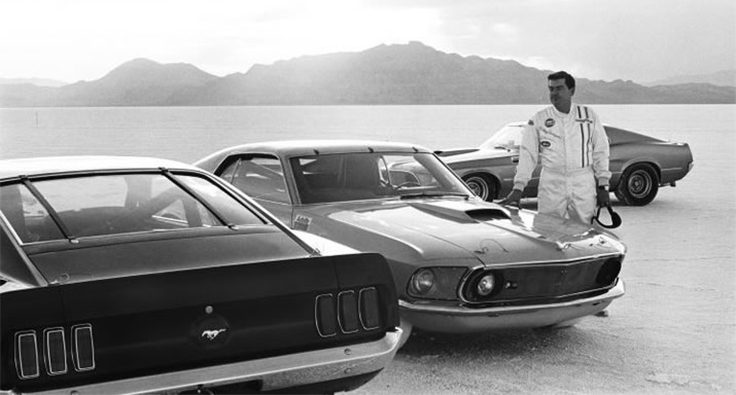
Any amount of anonymity that Ongais had changed on a worldwide basis after he reunited with Thompson in late 1968. In September 1968, Thompson asked Ongais to help drive a trio of '69 Mustangs — one with a 302, the other two NASCAR-style 427s — on the Bonneville Salt Flats and in all set 295 national and international endurance records.

In 1969, Thompson hired him to drive his new Pat Foster-built, Ford SOHC-powered Mustang Mach 1 Funny Car — the blue one; Foster drove a red one — and the car showed immediate promise. At a time when a lot of cars were running in the 7.70s and .80s, Ongais’ first pass was a 7.57, and it didn’t take them long to get into the 7.30s. They dominated the season, winning the Bakersfield March Meet, Orange County’s Manufacturer's Meet, and the NHRA Springnationals and U.S. Nationals.
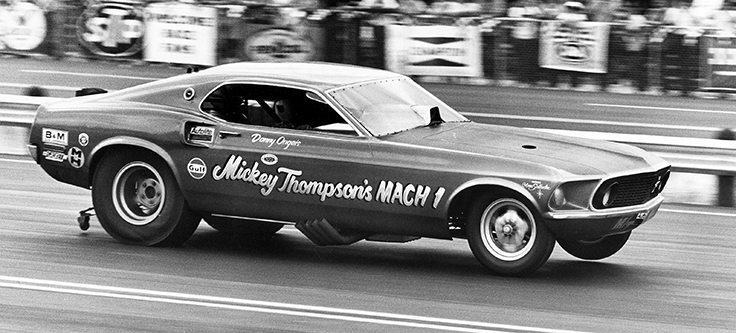
The 1970 season didn’t go as well, haunted by parts attrition and at least one fire that burned Ongais. They did score a memorable AHRA win at Lions Dragstrip on the fateful March 8 day that Don Garlits exploded the transmission in Swamp Rat 13, severing half of his right foot. The starting blast damaged the electronics, and the Funny Car final used a flag start, and Ongais defeated Prudhomme for the win. [Related Insider column: Whatever came of the famed Blue Mustang?]
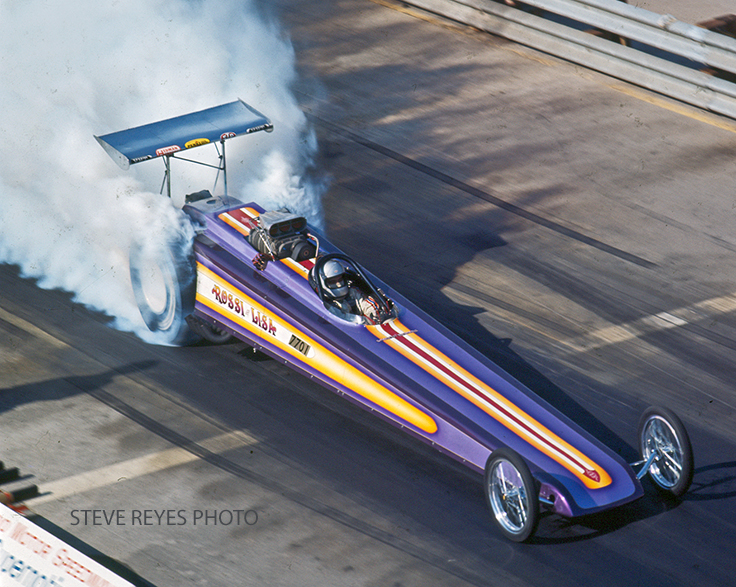
After leaving Thompson, Ongais drove for “Big John” Mazmanian, who subsequently sold the team to the Vel's/Parnelli Jones Racing team in the early 1970s. At times, Ongais drove both the trademark orange Vel’s Mustang Funny Car and “Flying Doorstop” Top Fueler at the same event; in the dragster, he set the national speed record at 243.24 mph at the 1972 Supernationals at Ontario Motor Speedway in what was the sport’s first 240-plus-mph national record.
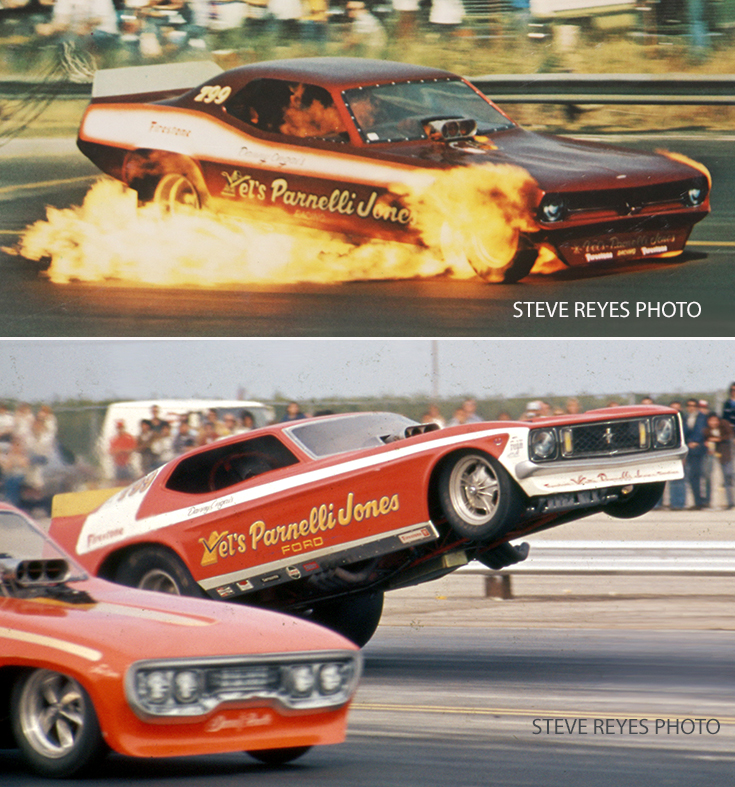
Ongais' outings in the various Vel's/Parnelli Jones Funny Cars were a little less successful but very exciting.
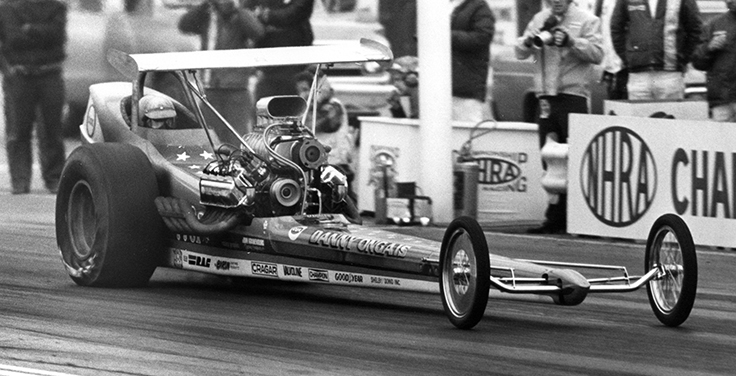
Ongais raced and drove a number of Top Fuel cars in those years, including this cool-looking winged slingshot at the 1972 Winternationals.
Ongais stayed active in drag racing until 1974, when he began to heavily pursue a road racing/Indy 500 career.
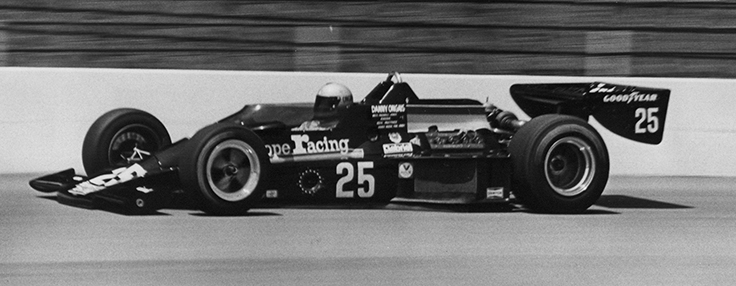
In 1975, Ongais left the quarter-mile to pursue success in other motorsports and drove in SCCA, Formula 5000, Indycar, Formula 1, and sports-car competition. He was the Indycar Rookie of the Year in 1977, competed in the Indy 500 11 times, and finished as high as fourth (1979) and also competed in both the famed 24 Hours of Daytona and the 24 Hours of Le Mans before hanging up his driving gloves in 1998.
Even with a short 10-year stint in drag racing, Ongais was still so well regarded that he was voted No. 39 on the list of the Top 50 Racers in 2000, the same year that he served as the NHRA California Hot Rod Reunion grand marshal and was inducted into the Motorsports Hall of Fame of America. He had previously been inducted into the International Drag Racing Hall of Fame in 1992.
Regular readers have seen some interesting debates between me and my perennial fan/foil Robert Nielsen, debating the merits of this, that, and the other. One long-running debate we had was: “Who was Hawaii’s greatest drag racer?”
I was/am still solidly in the Roland Leong camp. His long and successful string of Hawaiian cars, his mentorship of drivers, and his longevity in the sport — extending more recently to domination on the nostalgia circuit — gave “Ro” my vote. (The fact that we share the same birthday — albeit 16 years apart — has nothing to do with it.)
Nielsen was hard-core Ongais all the way, peppering me with facts and stats to prove his case, so, naturally, I reached out to ask for his parting thoughts on Ongais.
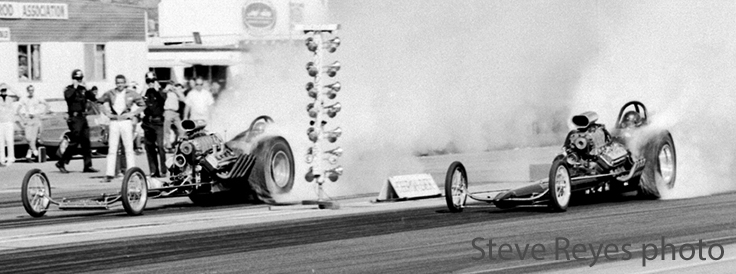
“I grew up in Southern California and raced a lot at the local SoCal dragstrips from about 1962 to 1974. I, like many, always enjoyed watching the Top Fuel and Funny Cars when I was not racing my own car. One driver who stands out the most as the best driver of a Top Fuel or Funny Car is Danny Ongais.
“Ongais had a couple of nicknames, including the ‘Silent Hawaiian’ and ‘On the Gas.’ He got the name ‘Silent Hawaiian’ because he did not like to give interviews to the media and kept pretty much to himself. I personally liked the ‘On the Gas’ nickname more because it was a play on his last name, and more importantly, that was the way he drove.

“It was always wide-open throttle. He seldom lifted no matter how crossed up and sideways the car got. Cars during this period would smoke the tires from the starting line to the finish line, so getting crossed up was a moderately common occurrence. Plus, the tracks were not prepared with traction compound like they are today, making them a lot more slick and tougher to drive on. Ongais had a sixth sense, so he could detect the car almost before it started to move and get out of shape. This coupled with his lightning-quick reflex reactions and featherlight touch allowed him to correct for it and to get to the finish line without lifting off the throttle.
“Ongais had always expressed a desire to drive an Indianapolis 500 car. When he got his chance, he did not disappoint anyone. He quickly showed he could drive those cars as fast as anyone. Ongais’ ability to drive these cars near their performance limits unfortunately resulted in a couple of spectacular crashes in Indy. While he did not win the Indianapolis 500, he did manage to win several IndyCar and CART races.
“Danny Ongais, by any measure, was one of the all-time greatest race car drivers! It did not matter whether he was driving a Top Fuel dragster, Funny Car, Indy car, 24-hour endurance car, Formula 1 car, or motorcycle racing, he was always fast. Rest in peace, Danny Ongais.”

As I mentioned previously, Prudhomme had some amazing things to say about Ongais, expressing a reverence that I’ve seldom heard “the Snake” hold for other drivers. Usually it’s me calling him for comment on someone who’s passed, but this time he called me (he was, in fact, the first person to tell me of Ongais’ passing).
“Every so often, a guy comes along, somebody that really catches your attention, that impresses you, and, for me, he was that guy,” Prudhomme said. “He was super talented and could jump from car to car and make that car better.
“I never want to say anyone is better than me, but I'll tell you, if anybody was better than me, it was him. He was that talented. I mean, listen … I've done well in drag racing, and I've driven Top Fuel and Funny Car, but so had Danny, but he even went two or three steps further, driving an Indy car and hauling ass and in IMSA cars. He did things that guys like me only dream about doing. He was my hero, to be honest with you. He really was.
“I got to spend time with Danny at the [Indy] Speedway, and I just watched him do his thing, and he was magnificent. He was a true talent. He was as smooth they get.
“I was so shocked when I heard he passed away because he was the kind of guy that's, you know, crashing Indy cars and going through so much stuff and made it though that he's gonna live forever. Drag racing, that's been my life, but for Danny, it was just part of where he wanted to go, and he sure got there.”
Wow, that’s some high praise. And well-deserved.
RIP, “On the Gas.”
Phil Burgess can be reached at pburgess@nhra.com
Hundreds of more articles like this can be found in the DRAGSTER INSIDER COLUMN ARCHIVE
Or try the Random Dragster Insider story generator



















































